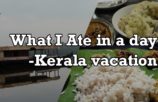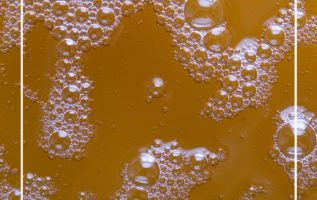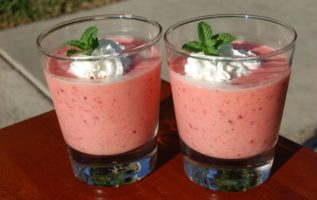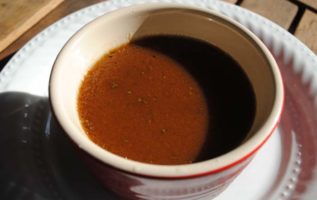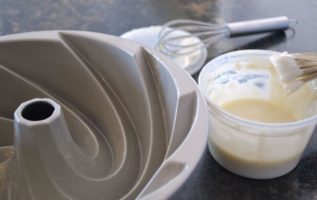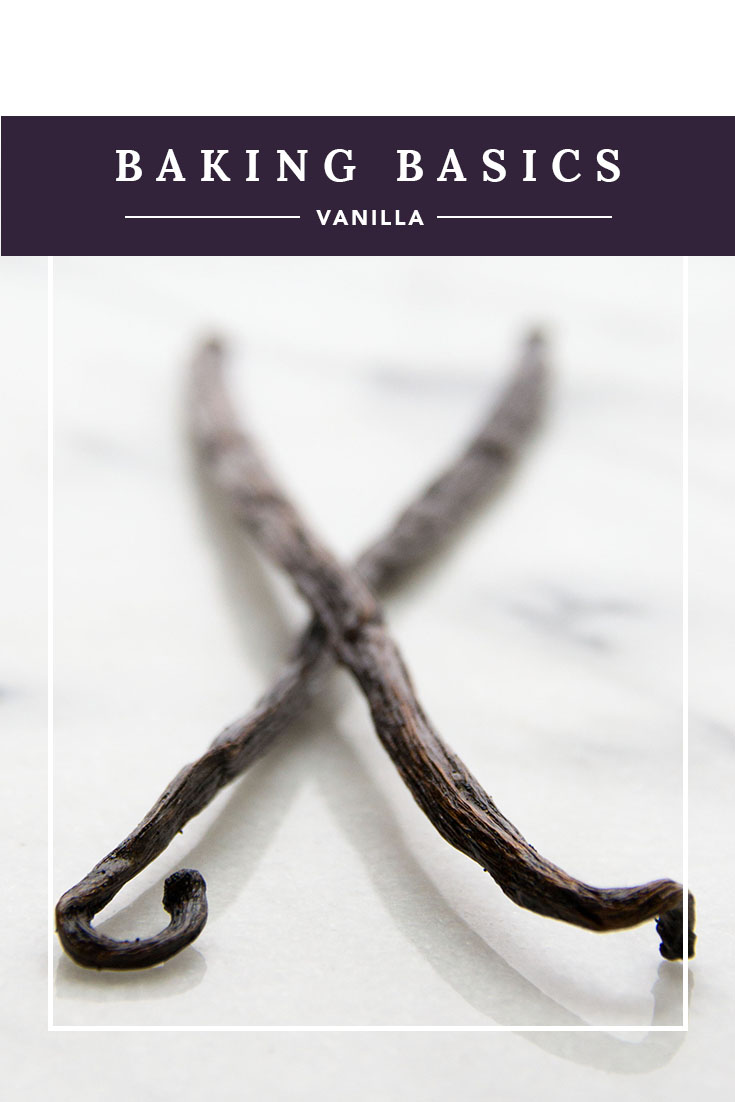
So pretty much every dessert recipe calls for vanilla extract. It’s kind of a baseline flavor for all things sweet, which is perhaps why the term “vanilla” has become synonymous with “boring.” But vanilla is anything but dull! In the right applications, real vanilla can add smoky, caramel, or even floral nuances to your desserts. Sure, it might not make a whopping difference in your Peanut Butter Raspberry Chocolate Chunk cookies, because it has a lot to compete with. But a simple vanilla bean crème brûlée? You’re gonna want some nice beans. But what’s the big deal with vanilla and why is it so freaking expensive?
HISTORY
The story of vanilla begins in Mexico, where the Vanilla planifolia orchid grows on vines. Because the orchid can only be pollinated by the Melipona bee native to the area, Mexico was the sole producer of vanilla until the mid-1800s. Attempts were made to transport the orchid to other tropical locations, but without the Melipona bee, they did not produce the pods necessary for vanilla beans. In 1836, a Belgian botanist named Charles Morren noticed the connection between the bees and the pods and attempted to hand-pollinate the flowers. However, his method was ultimately too costly to be implemented on a large scale. In 1841, however, a 12-year-old slave named Edmond Albius created a relatively easy and cost-effective method to hand pollinate the flowers. With his discovery of this technique, vanilla is now able to be cultivated in other locales, such as Madagascar, Tahiti, India, Uganda, Indonesia, and even Hawaii.
HOW VANILLA IS MADE
Believe it or not, in today’s industrialized and technology-laden world, vanilla is still hand-pollinated. The orchids only open once for about 4 hours, and in that short period of time, they must be pollinated or the flower will fall off the vine without growing a pod. Watch this fascinating video to see how the hand-pollination process works. It’s an extremely delicate and time-consuming task that in itself accounts for the high cost of vanilla beans. But the hand-pollinating is only the first part of the vanilla bean process!
After hand-pollination, one green pod grows from the each orchid. The pods grow for a several months before they are long enough to be harvested. Once picked, the pods are heat-cured, either in the sun or in hot water, at which time the pods turn from green to brown. For 6-8 weeks after curing, the pods are alternately placed in the sun and then contained or wrapped to “sweat,” a process which develops the flavors and dries them out. Finally, the dried pods are aged for a few more months to intensify the flavor before being shipped out and sold at understandably high prices around the world.
Vanilla extract is made in various ways, but most commercial pure vanilla extracts contain vanilla bean extractives, alcohol, water, and sometimes sugar, corn syrup, or another sweetener. According to the FDA, vanilla extract must contain 35 percent alcohol by volume and one unit of vanilla per gallon. If more than one vanilla unit per gallon is used, vanilla is labeled as two- or three-fold (or double- or triple-strength).
Imitation vanilla extract is derived from the organic compound vanillin, which is one of hundreds of compounds that occurs naturally in the vanilla bean. For flavorings, the vanillin is usually derived from lignin, a byproduct of the wood pulp industry, or guaiacol, which comes from wood resin. Imitation vanillas usually have a lower alcohol content by volume than pure vanilla extracts and may have other flavorings in addition to the vanillin.
IMITATION VS. PURE VANILLA EXTRACT
I personally am a fan of the pure stuff, but I know that it’s expensive and sometimes you don’t even get to taste it in your final product. As Joe Pastry says, “As the number of ingredients in a recipe goes down, the quality of those ingredients must go up.” Which means you can use some cheapo imitation vanilla extract to cut costs in things like chocolate chip cookies where the vanilla isn’t the MVP.
The downsides of imitation vanilla are that it doesn’t have the depth of flavor of the real stuff because it only uses one of the many compounds found in vanilla beans (again, this is more important in some recipes than others) and that there are most definitely more additives in imitation vanilla than in pure vanilla extract. For a well-known example, McCormick Premium Imitation Vanilla Extract contains: “Water, Alcohol (26%), Natural Flavorings (Including Extractives Of Cocoa And Extractives Of Tea), Vanillin And Other Artificial Flavorings, Corn Syrup, And Caramel Color.” Comparatively, Nielssen-Massey’s Pure Vanilla Extract contains: Water, Alcohol (35%), Sugar, Vanilla Bean Extractives.
One upside of imitation vanilla is that many people are so used to artificial vanilla flavorings and scents in the products they buy in the grocery store, their candles, and so on, they actually prefer the taste of imitation vanilla. It is often more potent, if less nuanced, than real vanilla. For years, I swore my mom had the best realMexican vanilla extract, only to later discover that it was a sugary imitation concoction. But it sure made cookies taste excellent, because imitation vanilla maintains its flavor even after exposure to higher heats, unlike real vanilla, which loses many of the subtleties found in its non-vanillin compounds in temperatures over 280°F.
My verdict? If you’re a One-Vanilla-To-Rule-Them-All kind of person, go for pure vanilla extract. If you want to be thrifty, invest in the pure stuff for ice creams, puddings, frostings, etc. and snag an imitation vanilla you like for baked goods.
WHICH BEAN IS BEST?
That’s a hard question. First of all, most stores are only going to stock Madagascar (aka “Bourbon”) vanilla beans, or possibly Mexican vanilla beans. These are the two most popular and are considered the “finest” beans. You can buy many other varieties online, though. I have tried all kinds of beans from Beanilla, an online shop that sells Tahitian, Tongan, Ugandan, Indian, and Indonesian varieties in addition to Madagascar and Mexican vanilla beans. My personal favorite is the Tahitian bean, but in a blind taste-test in ice cream among my family and friends, Ugandan vanilla was the clear winner. I have also had the pleasure of trying Hawaiian vanilla beans and touring the Hawaiian Vanilla Company‘s facilities in 2012. They are decent beans and are grown in an absolutely gorgeous location, but the $12 per bean price tag isn’t enough to make me go back for more. (I still highly recommend you pay them a visit and do a tour if you visit Hawaii.) Ultimately, you will have to be the judge of what your favorite is, and I encourage you to try out a bunch of varieties to see what floats your vanilla boat.
Source: siftandwhisk.com (defunct blog)














